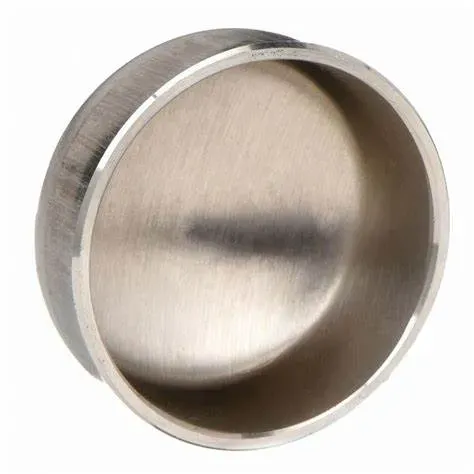-
Cangzhou Yulong Steel Co., Ltd.
-
Phone:
+86 13303177267 -
Email:
admin@ylsteelfittings.com
- English
- Arabic
- Italian
- Spanish
- Portuguese
- German
- kazakh
- Persian
- Greek
- French
- Russian
- Polish
- Thai
- Indonesian
- Vietnamese
- Zulu
- Korean
- Uzbek
- Hindi
- Serbian
- Malay
- Ukrainian
- Gujarati
- Haitian Creole
- hausa
- hawaiian
- Hebrew
- Miao
- Hungarian
- Icelandic
- igbo
- irish
- Japanese
- Javanese
- Kannada
- Khmer
- Rwandese
- Afrikaans
- Albanian
- Amharic
- Armenian
- Azerbaijani
- Basque
- Belarusian
- Bengali
- Bosnian
- Bulgarian
- Catalan
- Cebuano
- China
- China (Taiwan)
- Corsican
- Croatian
- Czech
- Danish
- Esperanto
- Estonian
- Finnish
- Frisian
- Galician
- Georgian
- Kurdish
- Kyrgyz
- Lao
- Latin
- Latvian
- Lithuanian
- Luxembourgish
- Macedonian
- Malgashi
- Malayalam
- Maltese
- Maori
- Marathi
- Mongolian
- Myanmar
- Nepali
- Norwegian
- Norwegian
- Occitan
- Pashto
- Dutch
- Punjabi
- Romanian
- Samoan
- Scottish Gaelic
- Sesotho
- Shona
- Sindhi
- Sinhala
- Slovak
- Slovenian
- Somali
- Sundanese
- Swahili
- Swedish
- Tagalog
- Tajik
- Tamil
- Tatar
- Telugu
- Turkish
- Turkmen
- Urdu
- Uighur
- Welsh
- Bantu
- Yiddish
- Yoruba

Sep . 16, 2024 07:22 Back to list
pn16 flange
Understanding PN16 Flanges A Key Component in Pipeline Systems
Flanges are an essential component in the realm of pipeline systems, serving as connectors that allow pipelines to be joined together securely. Among the various types of flanges available, the PN16 flange is particularly significant in industrial applications. The term PN stands for Pressure Nominal, which is a metric used to indicate the maximum pressure that a flange can handle at a specified temperature. In the case of PN16, the designation implies that the flange can effectively manage pressures up to 16 bar (approximately 232 psi) at a temperature of 20°C.
Design and Specifications
PN16 flanges are typically made from a variety of materials, including carbon steel, stainless steel, and alloy materials. The choice of material depends on the application environment, including the fluid being transported, pressure conditions, and temperature ranges. The dimensions of PN16 flanges are standardized according to several international standards, such as ISO 7005, which ensures compatibility with different piping systems. Common sizes for PN16 flanges can range from DN10 (10mm) to DN600 (600mm) in diameter.
The design of the PN16 flange features a raised face, which provides a tighter seal when bolted to another flange. This is particularly important in preventing leaks, especially in high-pressure environments. The flanges are often equipped with bolt holes that follow a specific pattern to ensure even distribution of force when tightened. Gaskets made from materials such as rubber, PTFE, or metal are typically used between the flanges to ensure a reliable seal.
Applications
PN16 flanges are predominantly found in various industrial sectors, including water supply, sewage treatment, chemical processing, and oil and gas operations. Their ability to withstand high pressures makes them ideal for handling fluids under challenging conditions. For instance, in municipal water systems, PN16 flanges are commonly used to connect pipes that transport potable water, ensuring safety and integrity.
pn16 flange

In the oil and gas industry, PN16 flanges are crucial in pipeline systems that transport crude oil, natural gas, and various chemicals. The reliability of these flanges is paramount, as any failure could result in catastrophic leaks or spills, prompting significant environmental and safety concerns.
Installation and Maintenance
Proper installation of PN16 flanges is critical to ensure their effectiveness. The surfaces of the flange must be clean and free of any debris or imperfections that could compromise the seal. Flanges should be tightened in a cross-pattern to achieve uniform pressure, preventing warping or damage.
Regular maintenance is also essential. Inspecting flanges for wear, corrosion, and other forms of deterioration can help prevent leaks and prolong the lifespan of pipelines. If any cracks or abnormalities are detected, it is advisable to replace the flange promptly to maintain system integrity.
Conclusion
In conclusion, PN16 flanges play a vital role in ensuring the reliability and efficiency of pipeline systems across various industries. Their robust design and ability to manage high pressures make them indispensable for safe and effective fluid transportation. Understanding their specifications, applications, and proper maintenance can significantly contribute to the longevity and performance of piping systems.
Latest news
-
ANSI 150P SS304 SO FLANGE
NewsFeb.14,2025
-
ASTM A333GR6 STEEL PIPE
NewsJan.20,2025
-
ANSI B16.5 WELDING NECK FLANGE
NewsJan.15,2026
-
ANSI B16.5 SLIP-ON FLANGE
NewsApr.19,2024
-
SABS 1123 FLANGE
NewsJan.15,2025
-
DIN86044 PLATE FLANGE
NewsApr.19,2024
-
DIN2527 BLIND FLANGE
NewsApr.12,2024
-
JIS B2311 Butt-Welding Fittings LR/SR 45°/90° /180°Seamless/Weld
NewsApr.23,2024











